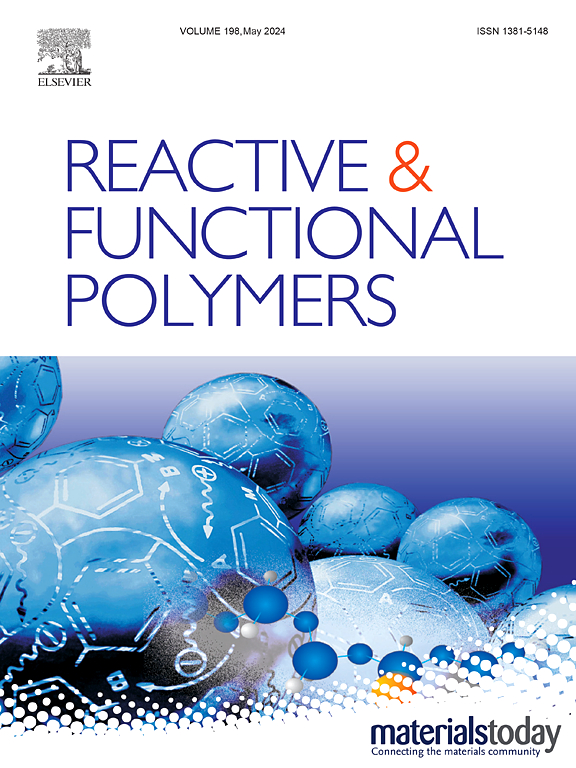Synthesis and characterization of succinylated pectin hydrogels with enhanced swelling performances
IF 5.1
3区 工程技术
Q1 CHEMISTRY, APPLIED
引用次数: 0
Abstract
A novel polymeric material was obtained through succinylation of pectin (S-Pec), resulting in greater stability, film-forming ability, transparency, swelling, and water retention capacity compared to native pectin (Pec). Spectroscopic techniques confirmed the success of the succinylation reaction performed on pectin, employing the reaction of galacturonic acid with succinic anhydride as a model reaction under similar experimental conditions. Moreover, fluorinated succinic anhydride was used to gain insight into the succinylation degree by X-ray Photoelectron Spectroscopy, and a different thermal behavior of S-Pec compared to Pec was confirmed through thermoanalytical characterization. Additionally, the effect of cross-linking either Pec or S-Pec in the presence of divalent cations (i.e., calcium or magnesium ions) on water retention capacity and stability was tested. A significant improvement in the ability to absorb and retain water or saline solution was found for magnesium-crosslinked succinylated pectin, while the in vitro hydrogel stability was higher for the calcium-crosslinked one. The obtained polymer represents a promising substrate for the development of natural-based superabsorbent polymers.

具有增强膨胀性能的琥珀酰化果胶水凝胶的合成与表征
通过果胶琥珀酰化(S-Pec)获得了一种新型聚合物材料,与天然果胶(Pec)相比,它具有更高的稳定性、成膜能力、透明度、膨胀性和保水能力。光谱技术证实了在果胶上进行琥珀酰化反应的成功,在类似的实验条件下,采用半乳糖醛酸与琥珀酸酐的反应作为模型反应。此外,利用x射线光电子能谱分析了氟化琥珀酸酐的琥珀化程度,并通过热分析表征证实了S-Pec与Pec的不同热行为。此外,还测试了在二价阳离子(即钙或镁离子)存在下交联Pec或S-Pec对保水能力和稳定性的影响。镁交联琥珀酰化果胶对水和盐水溶液的吸收和保留能力有显著提高,而钙交联琥珀酰化果胶的体外水凝胶稳定性更高。所获得的聚合物为开发天然高吸水性聚合物提供了良好的基础。
本文章由计算机程序翻译,如有差异,请以英文原文为准。
求助全文
约1分钟内获得全文
求助全文
来源期刊

Reactive & Functional Polymers
工程技术-高分子科学
CiteScore
8.90
自引率
5.90%
发文量
259
审稿时长
27 days
期刊介绍:
Reactive & Functional Polymers provides a forum to disseminate original ideas, concepts and developments in the science and technology of polymers with functional groups, which impart specific chemical reactivity or physical, chemical, structural, biological, and pharmacological functionality. The scope covers organic polymers, acting for instance as reagents, catalysts, templates, ion-exchangers, selective sorbents, chelating or antimicrobial agents, drug carriers, sensors, membranes, and hydrogels. This also includes reactive cross-linkable prepolymers and high-performance thermosetting polymers, natural or degradable polymers, conducting polymers, and porous polymers.
Original research articles must contain thorough molecular and material characterization data on synthesis of the above polymers in combination with their applications. Applications include but are not limited to catalysis, water or effluent treatment, separations and recovery, electronics and information storage, energy conversion, encapsulation, or adhesion.
 求助内容:
求助内容: 应助结果提醒方式:
应助结果提醒方式:


